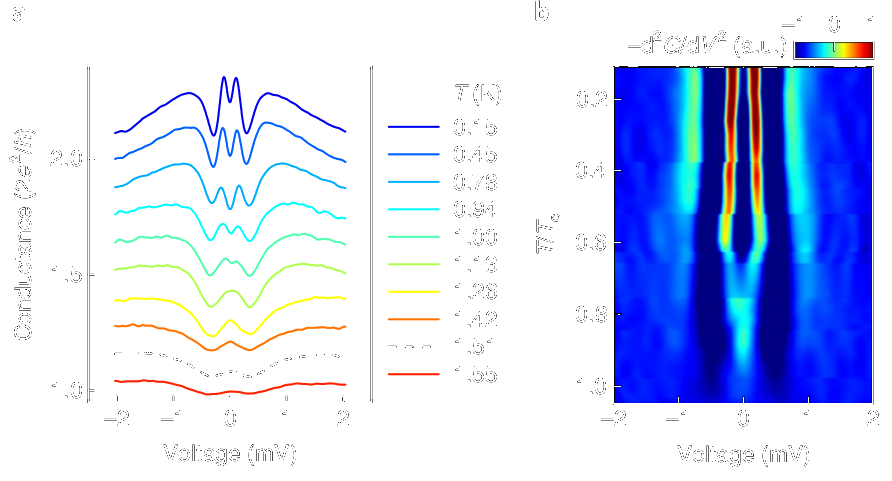A collaboration with Institut Néel (Grenoble) and Weizmann Institute of Science (Israel)
In most superconductors, the transition to the superconducting state is driven by the binding of electrons into Cooper pairs. The condensation of these pairs
into a single, phase-coherent, quantum state takes place at the same time as their formation at the transition temperature, Tc. A different scenario occurs in some disordered,
amorphous, superconductors: instead of a pairing-driven transition, incoherent Cooper pairs first preform above Tc, causing the opening of a pseudogap, and then, at Tc,
condense into the phase-coherent superconducting state. Such a two-step scenario implies the existence of a new energy scale, Δc, driving the collective
superconducting transition of the preformed pairs.  We have unveiled this energy scale by means of Andreev spectroscopy in superconducting thin films of amorphous indium oxide (See the image).
We have observed two Andreev conductance peaks at ±Δc that develop only below Tc and for highly disordered films on the verge of the transition to insulator. Our findings demonstrate that
amorphous superconducting films provide prototypical disordered quantum systems to explore the collective superfluid transition of preformed Cooper pairs.
We have unveiled this energy scale by means of Andreev spectroscopy in superconducting thin films of amorphous indium oxide (See the image).
We have observed two Andreev conductance peaks at ±Δc that develop only below Tc and for highly disordered films on the verge of the transition to insulator. Our findings demonstrate that
amorphous superconducting films provide prototypical disordered quantum systems to explore the collective superfluid transition of preformed Cooper pairs.
Read more in
T. Dubouchet et al. Nature Physics , (2018)